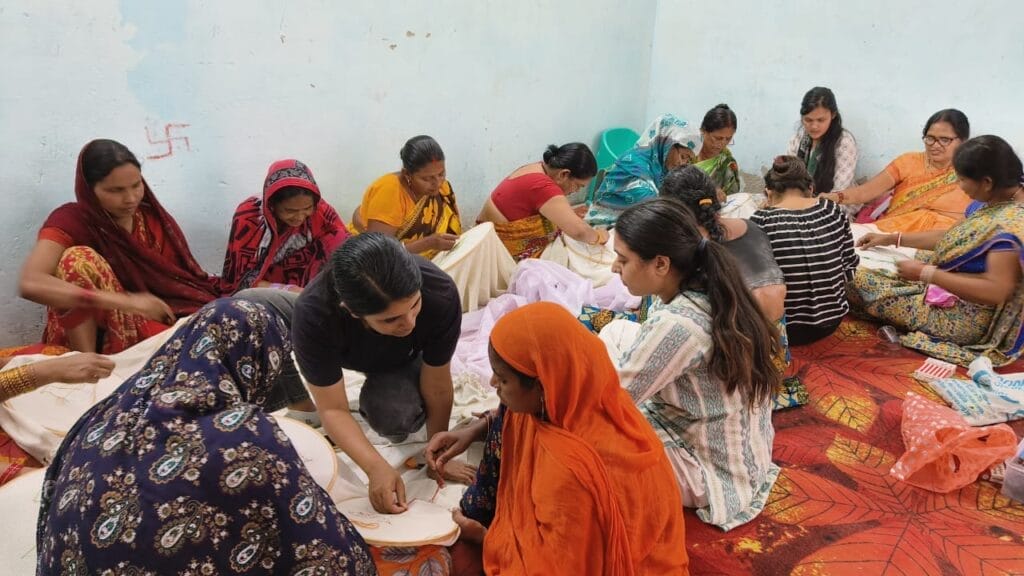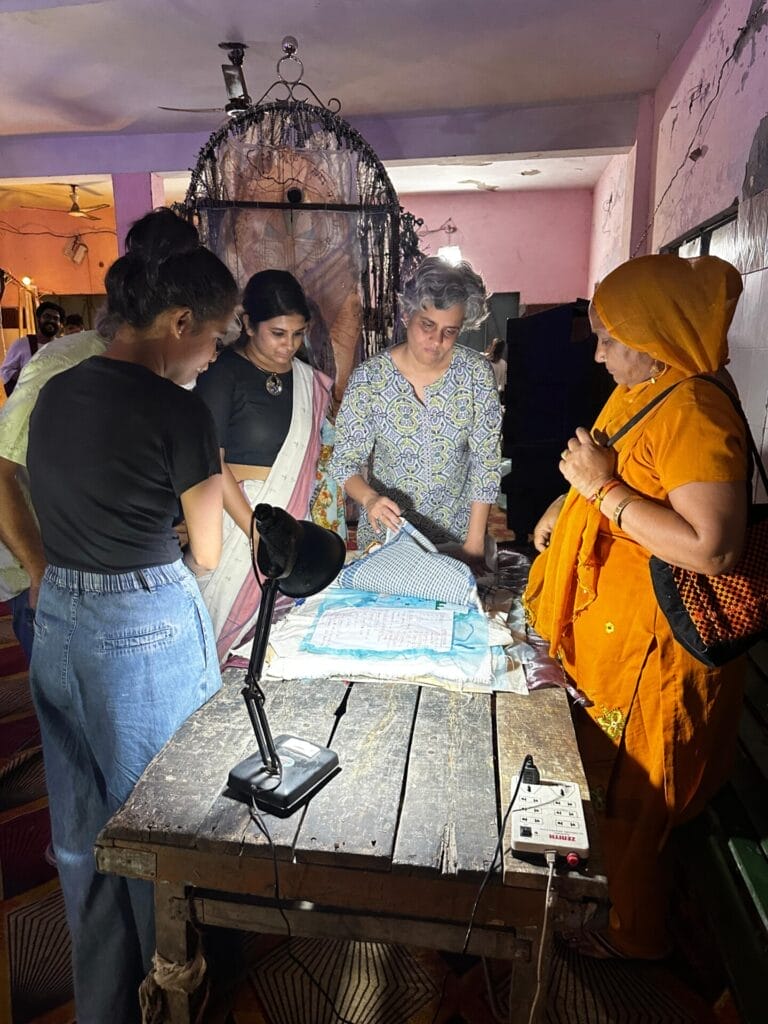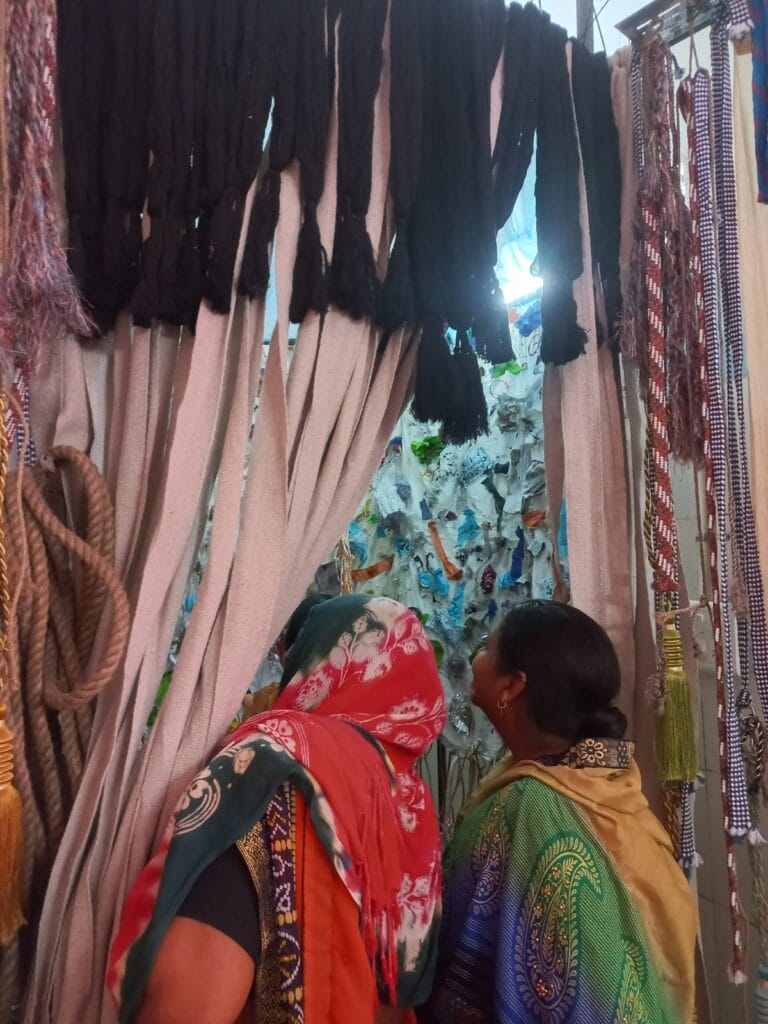Anita Devi lives in Nand Nagri, a densely populated area in north east Delhi, conspicuous by its narrow lanes, lack of open spaces and congested atmosphere. About 20 odd kilometres further north stands the huge Bhalswa landfill, where Shaira Bano earns her living as a waste picker, the ‘koode ka pahad’ (mountain of trash) looming large and leaving an imprint on her daily life, as on the lives of so many other women. Anita and Shaira — two women, separated by the distinct urban landscapes they inhabit and the circumstances of their lives, but nevertheless united by one thing: bearing the brunt of Delhi’s chronic air pollution.
So what does this all-pervasive pollution mean to them? How would they express the realities of their lives in the shadow of this constant threat?
That is what Anita and Shaira and several other women from Nand Nagri and Bhalswa came together to narrate, through their art, in a series of exhibitions organised by Help Delhi Breathe, in collaboration with the Mahila Housing Trust, FICA, and artists Niroj Satpathy and Moumita Basak. These women, engaged in waste picking, home-based work, and domestic labour, navigate their daily lives amidst the harsh realities of their environments.
Read more: Women construction workers face serious health hazards at work and beyond
Envisioned as community showcases, the exhibitions titled ‘Hawa Mein Baat’ transformed the women’s silent struggles in the face of air pollution into vibrant tapestries. The art on display amplified their experiences, which are often excluded from the dialogue on urban development and climate change.
Hawa Mein Baat
Used colloquially, the expression can mean ‘talking in the air’ or something of little importance. But here was an intentional inversion, a satire; a way for women to bring their stories and experiences to the fore, in the discourse on climate change and air pollution.
Through the collaboration with artists Niroj and Moumita, a participatory methodology was developed that involved a series of art workshops with the women. In these workshops, women had the time and space to discuss their experiences and also an outlet to express them.

The workshops allowed the women to engage in various creative processes, from stitching tapestries to creating mixed media pieces from found objects. They used empty candle holders, medical masks and even discarded wedding cards to tell their stories. The resulting artworks formed a tapestry of their lived experiences, each piece a thread in the larger narrative of their community’s struggle with air pollution.
Interestingly, in the Nand Nagri workshops, women chose to do silai/kadhai (embroidery) on the textile pieces, that being a familiar form to many of the women. In Bhalswa, the site of one of Delhi’s largest landfills, these air pollution stories were told through discarded objects and trash.
The featured artworks weren’t just personal expressions; they were also political statements. A discarded wedding card stitched on cloth, for example, depicted the struggle of finding matrimonial matches in a community overshadowed by a landfill. Other pieces reflected a longing for simpler, cleaner times, with images of birds in flight and natural landscapes juxtaposed against the grim reality of pollution.
“People see the landfill as Bhalswa’s biggest issue. It is so for us as well, who go to the landfill and make our livelihoods through it,” says Shaira, “So for us, the khatta, or landfill, is a way to fill our stomachs. Who can think about pollution?”
Read more: As Delhi aims for Bhalswa landfill closure, thousands worry about livelihood loss
In Nand Nagri, women depicted the need for safe public spaces, the isolation and oppression of closed-off private spaces, and the nostalgia associated with greenery, blue skies, and birds in flight signifying freedom. Anita Devi found solace and a sense of community in these sessions. “In the workshops, I was able to take out time for myself. I enjoyed doing the silai, sitting with other women and discussing our challenges. I learned that art can be used as a way of engaging people in a new and interesting way,” she says.
Thus exhibits such as “Mehengi Hawa,” “City Chitti,” and “Khatta” saw the women using art to examine and reflect on their personal freedom and status within family and society, as well as their relationship with the urban spaces they live in, with climate change and air pollution.

The real objective: Focus on mitigating air pollution
Help Delhi Breathe has for long been engaged in raising awareness of the disproportionate health and livelihood impacts of air pollution on people in the informal sector. Over the last year alone, the initiative reached over 1,100 informal sector workers with relevant information to protect them against the ill effects of air pollution, and engaged with more than 45 civil society organisations to revitalise conversations on air pollution.
They have also consistently used art to raise awareness and draw attention to this critical issue: starting with the “My Right to Breathe” installation of lungs made from HEPA filters in 2018, to murals in Delhi’s resettlement colonies. The Hawa Mein Baat exhibitions were just a step forward in the same direction.
Niroj, who led the creative workshops, emphasises the transformative power of art: “I based the artwork around the daily lives and struggles of people living and working near the landfill, and so waste and discarded objects feature prominently in the exhibit. Art has the power to transform perceptions, and through this exhibit, we wanted to shift the perception of the viewer towards Bhalswa and its residents.”
But the exhibitions also gave the participants a channel of expression and a sense of agency. Hemlata, a participant from Nand Nagri who works as a part time domestic worker says, “I never could imagine so many people would come to see something I made or listen to what I had to say. I felt very proud to show my children and community members my art panel. It feels like a leader.”

“Using participatory art practice as a method has worked immensely well in our projects. Here, the workshops and the community showcase inspired women from the communities to come together to imagine and co-create the exhibition with the artists,” says Ananya Sharma, Visual Designer and Researcher at Help Delhi Breathe, “Through the workshops, the women felt a strong sense of ownership over the idea, discovering the importance of a clear blue sky. They had the opportunity to actively participate in the exhibition and voice their own stories.”